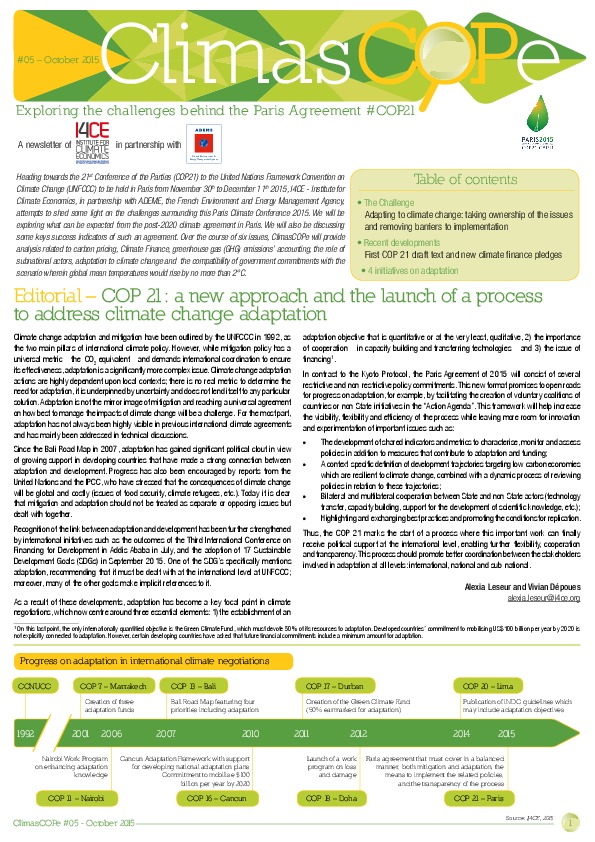Climate Change Adaptation
Heading towards the 2015 Paris international Climate Conference (COP21), I4CE, in partnership with ADEME, the French Environment and Energy Management Agency, releases ClimasCOPe # 5 on climate change adaptation
ClimasCOPe # 5 focuses on the place of climate change adaptation in the climate action. After an editorial titled « COP 21: a new approach and the launch of a process to address climate change adaptation » written by A. Leseur and V. Dépoues, I4CE experts analyze the issue of adapting to climate change by taking ownership of the issues and removing barriers to implementations. Then, ClimasCOPe #5 presents the recent developments of in international climate negotiations (the climate negotiations before the COP21, a new Sustainable Development Agenda for 2015-2030, New York Climate week, ministerial meetings and the annual meetings of the World Bank and IMF); to end it up with four key initiatives related to climate change adaptation.

